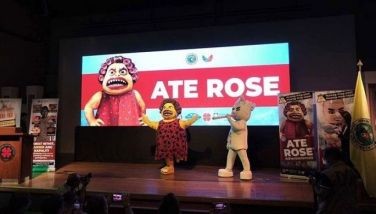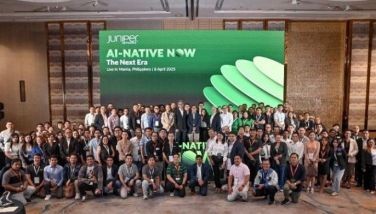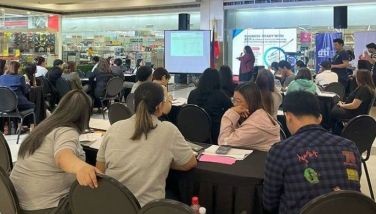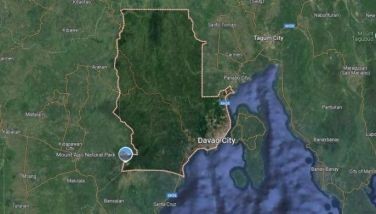Slow Food youth

Before you think this column is about slow learners, let me bring back the idea about Slow Food and its principles – good, clean and fair food. When Slow Food the movement was conceived, the founders led by Italian Carlo Petrini were concerned about the entry of fast food to Italy in the late 80s. But it has become more than that today. As we promote the preparation of food using traditional processes like making natural coconut milk from scratch, using all the parts of an animal, using heirloom plants and herbs, being mindful of seasonality – we are all talking about Slow Food. Yes, it is not slow cooking in a crock pot as many people literally think of it. It is “slow” as opposed to fast but more to preserve food cultures around the world.
Why am I concerned about today’s learners? Because they grew up among instant everything – instant seasonings like sinigang mixes rather than using kamias or sampaloc, using champorado mix rather than looking for malagkit rice and cacao powder, and maybe trying to make chicharon for many hours rather than just buying processed versions. Yes, why should we make life complicated when “instant” is available?
I happened to meet two groups of educators in one single day and we talked about Slow Food, so the principles can be integrated into their curriculum or if they can simply introduce Slow Food to our future chefs and cooks.
One professor shared with me how her students find using mixes vs cooking from scratch to have no distinct difference. I disagree completely. Yes, the flavor may be there, but with continued use of these instant mixes, depth of flavor may not be present or may not be discernible. Though that is arguable, I am more concerned about the death of the traditions or culture. How will students know how to process sampaloc if they keep using mixes? How will they know how to look for kamias or batuan to make a sinigang? These processes of preparing a simple dish like sinigang may forever be forgotten.
Another concept we advocate in Slow Food is “nose to tail” or promoting zero waste in using an animal carcass or a chicken. I was recently in Taipei and there they promote or are used to eating a goose, for example, and everything about it – intestines, blood, skin, ass, breast, legs as we experienced lunch at a goose restaurant. Today’s children may only know chicken legs and drumsticks as we do not import breast parts (they are more expensive due to demand in Western countries) and today’s diners never get to see other parts of a chicken. I remember having chicken nilaga (boiled) and my mother would use other parts, chicken blood included. Blood was mixed with uncooked grains of rice, before being solidified in chicken soup and out came squares of delicious iron-rich chicken blood nuggets. I do not see this anymore, especially as we now just import chicken parts. Where do the other parts go?
The other idea being promoted by Slow Food is seasonality or respecting the seasons. Today’s children are able to eat strawberries and other fruits anytime they choose to because of modern hybrid varieties of fruits that are grown year-round. This was not the way before – you waited for summer to have the sweetest fruits. In Taipei they wait for the season to have fresh bamboo shoots served like a cold salad along with mayonnaise as a dip. How will children respect seasonality if they can have their fruits all year round? Chefs need to respect seasonality to be able to use vegetables (e.g. bamboo shoots) at their peak of sweetness and fruits at their best flavor profiles.
So how do we teach our college students who will be our future chefs and restaurant operators? We have to integrate the Slow Food principles in educational programs. We also have to let them meet artisans who labor over making salt, or processing muscovado. We can take them to rice fields so they can get to know how heirloom rice (not golden rice) is grown. If we stop using heirloom rice varieties, our rice farmers may stop planting and we will have no choice but to keep our imports of the most basic food, which is rice.
Our young generation can also join the Slow Food Youth Network, a group of enlightened youngsters aged 35 and below who are already conscious about food waste and have started to awaken to Slow Food principles of good, clean and fair. This young group holds a World Disco Soup Day every April 28 using ugly vegetables, kitchen discards and what otherwise would be thrown away by chefs to create a soup that they cook with the idea of sharing with others.
They will also appreciate the continued use of our rare ingredients which may disappear if we do not list them in the Ark of Taste, a veritable catalogue of the world’s endangered species. You will be surprised the Philippines has almost a hundred in the list of ingredients we must continue to use – if we are to preserve our food culture. Look up www.fonzazioneslowfood.org to see the list per country.
And I also encourage our educators to visit the UNISG or the University of Gastronomic Sciences in Polenzo, Italy to know more about World Food Cultures and Gastronomy. I know of a few Filipino graduates whose careers and lives changed because of this enlightenment at UNISG and meeting people from around the world.
For those who have time in late September, visit the bi-annual Terra Madre/Salone del Gusto this year in Turin, Italy where your eyes will open to all the possibilities to preserve food cultures (www.slowfood.com). It is open to the public and is an experience for foodies, farmers and, most of all, educators (and legislators).
If we all work together with educators and legislators, we may have a better and more secure food future and culture.
- Latest
- Trending




























